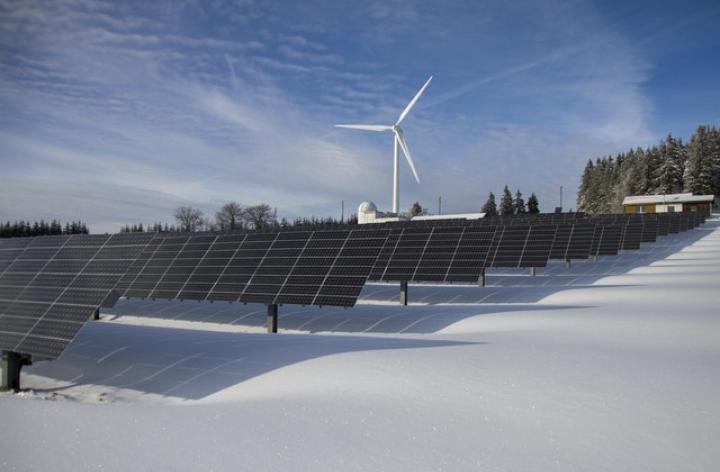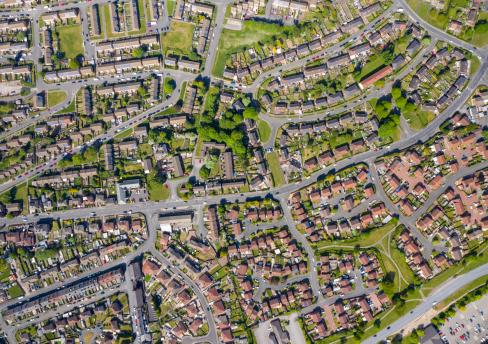Heat networks, often known as district heating, have taken a relatively long time to catch on in Scotland, certainly when compared with other European countries. Now a Delivery Plan sets out how the Scottish Government intends to increase the use of heat networks and how it will contribute towards meeting its emission reduction targets.

Heat networks, often known as district heating, have taken a relatively long time to catch on in Scotland, certainly when compared with other European countries. However, the introduction of the Heat Networks (Scotland) Act 2021 (“2021 Act”), passed by the Scottish Parliament last year, aims to put Scotland at the forefront of the UK in developing heat networks as a cornerstone of energy supply to our cities. The political will to deliver is further underlined by the recent publication of the Heat Networks Delivery Plan, a requirement of the 2021 Act.
What exactly is a heat network? The network provides heat (or cooling) to both residential and commercial properties which is generated centrally and then transported through pipes to individual properties within a local community. The key concept is that the energy (however created) is formed at centralised “energy centres” in place of individual heating sources (such as the household gas boiler). The main advantages are firstly efficiency in supply, and secondly versatility in the production of energy which can stem from renewable sources such as heat pumps or solar panels. The promotion and increased use of heat networks is seen by the Scottish Government as one of the key planks to help meet its target to become net-zero in the production of carbon emissions by 2045. Heating is one of the greatest causes of emissions output in this country with one source making it accountable for 47% of Scotland’s total carbon emissions. To allow for heat networks to operate both efficiently and at a larger scale, proper regulation and licensing of the networks will be necessary. This is not only to increase consumer confidence for the end user, but critically to allow for investor confidence to develop heat networks on the large scale envisaged by the Scottish Government as crucial to reach net-zero.
The Heat Networks Delivery Plan sets out how the Scottish Government intends to increase the use of heat networks and how it will contribute towards meeting its emission reduction targets. It follows a consultation on a draft version of the plan produced last November which sought responses on a number of matters. Some of the key points from the consultation responses and the Heat Networks Delivery Plan are set out below and give an insight into how a fully regulated heat network system may look in the future.
Building Assessment Reports
To ensure maximum efficiency, heat networks will have to be developed in carefully thought-out locations. The 2021 Act places an obligation on Scottish public sector buildings to undertake building assessment reports to assess suitability for becoming an “anchor building” suitable to store a heat network. These will typically be large buildings with a long-term demand for heat. There is a recognition that this provision is too restrictive as there will be a need for other premises within urban areas to also be assessed. The consultation response was very supportive of extending the obligation to undertake building assessment reports to other non-domestic buildings. Further guidance for building assessment reports is expected later in the year with proposals for which buildings will require them in early 2023.
Licences and Consents
Operators will be subject to a new licensing regime as prescribed by the 2021 Act. Although likely to take time to come into effect, it is seen as key in underpinning the success of the heat network regime by increasing consumer confidence in the sector, as well as comforting investors that fit and proper persons are operating the networks. The consultation sought responses on a number of areas including the required service and technical standards which a proposed licensee will have to meet, as well as the ability for ongoing monitoring by the licensing agency. The aim is to have an established licensing system in place with a licensing authority identified and set up by early 2024. Detailed proposals will be brought forward for further consultation early next year. The duty to grant consents to sites rests with the Scottish Ministers by default, with each local authority having the ability to request takeover and become the consenting authority for their area. The consultation sought responses on this as well as the proposal that the Scottish Government Energy Consents Unit instead assumes the role as the central consenting authority. There will likely be some tension here as to which is better placed to fulfil this duty. It would seem that a centralised body could result in a more consistent approach country-wide and avoid the need for separate consent administrations to be set up within each local authority. The plan does not provide further proposals at this stage which are instead expected to follow with a further consultation taking place next year.
Permits
The 2021 Act allows for permits to be granted to develop and operate a heat network within a specified area or zone. Again, this will be attractive to investors as it will mean that a project has exclusivity providing for long term certainty. This will also allow for sites to be carefully planned to ensure they are appropriately located to meet energy demand, especially within urban centres. The plan has not published further details on this and the matters raised at consultation stage, including permit durations and the body responsible for granting them. As with the proposed licensing scheme, this is expected to be looked again in detail next year.
Transfer Schemes
The purpose of the transfer schemes is to ensure there is no disruption to consumers in the event a network operator ceases to operate. The 2021 Act allows another party to step in and take over as operator of the heat network. This will be a critical element of the process to ensure continued supply, however, the delivery plan insists this will only be permitted in specific circumstances, not comparable to similar powers available in other regulated sectors, and such circumstances will be consulted on in early 2023.
As an aside to the publication, operators are also armed with land rights under the 2021 Act, similar to those that are currently enjoyed by public utility providers. These include compulsory purchase and servitude rights over third party land as well as wayleaves which can be obtained either with landowners' agreement or on application to the Scottish Ministers. Interestingly the 2021 Act proposes a Register of Wayleaves which, given their current unregistered status for other utilities, would be of use to both operators and landowners alike.
The heat network evolution in Scotland is at an early stage. We are already seeing more schemes developing throughout the country which is great, but we are starting off a little bit behind the curve. The publication of the Heat Networks Delivery Plan is a significant milestone in the government’s heat decarbonisation programme. A lot of gaps remain to be filled with further consultation and detailed proposals in the pipeline for next year, however, it is encouraging to see the foundations being set for the transformation of how we approach the heating of our homes and our businesses.
The content of this webpage is for information only and is not intended to be construed as legal advice and should not be treated as a substitute for specific advice. Morton Fraser LLP accepts no responsibility for the content of any third party website to which this webpage refers. Morton Fraser LLP is authorised and regulated by the Financial Conduct Authority.










